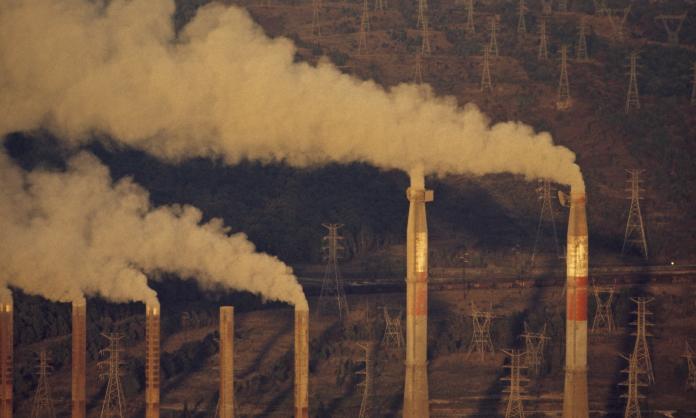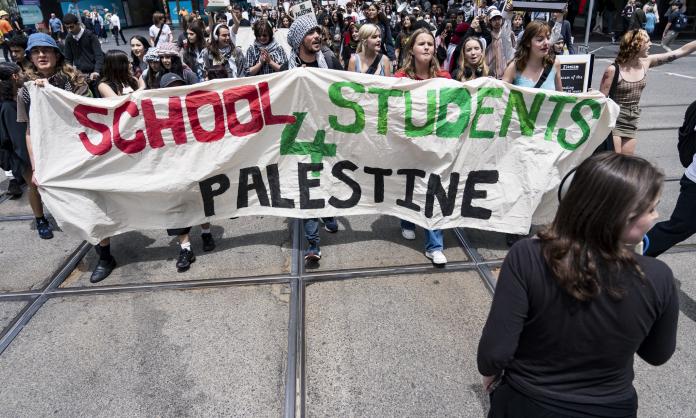The world’s great forests are in peril and, with them, the future of the planet. All around the globe, from the Amazon to the jungles of Indonesia, to the taiga that circles the Arctic, forests are succumbing to capitalism’s insatiable appetite for land and resources. As with climate change, scientists and environmentalists have long sounded the alarm and governments have pledged to act. But the rate of deforestation is as high as ever.
A 2019 report by Climate Focus, an environmental consultancy and think tank, found that annual deforestation in 2014-18 increased by 44 percent relative to the average from 2002 to 2013. In the later period, tropical “primary” (old growth) rainforest disappeared at an average rate of 4.3 million hectares per year. This is equivalent to an area almost five times the size of the playing field at the MCG being destroyed every minute, 24 hours a day, seven days a week.
In 1950, rainforest covered 15 percent of the Earth’s land area. Today, it’s just 6 percent: more than half of the world’s rainforests have disappeared in just 70 years. If the destruction of the forests continues at the current rate, there will, at best, be only small pockets left by the end of the century. The consequences of this would be catastrophic. Rainforests are biological treasure troves, containing around 50 percent of all the world’s plant and animal species. They help regulate the climate, the moisture-rich forests influencing patterns of temperature and rainfall across vast areas of the Earth. They are also a major carbon sink – soaking up carbon that would otherwise contribute to global warming.
The Amazon is at the centre of the deforestation crisis. It is by far the world’s largest rainforest, home to an estimated 10 percent of plant and animal species on Earth. Deforestation in the Amazon slowed in the 2000s and early 2010s following the introduction of new conservation measures by the Brazilian Workers’ Party government. From 2012 onwards, however, protections have been wound back. Now, under the leadership of far right president Jair Bolsonaro, the rate of deforestation is accelerating.
Bolsonaro came to power in October 2018. Further opening the Amazon for mining and cattle ranching was one of his main campaign promises, and in the two years since, he has given a green light to both legal and illegal clearing of forests on a massive scale. According to Brazil’s National Space Research Institute, between 1 August 2018 and 31 July 2019, almost 1 million hectares of forest were destroyed, up 30 percent on the previous year. In the first half of 2020, a further 336,700 hectares were lost – a 20 percent increase from the same period in 2019.
Widespread fires during the summer of 2019 were a sign of the immensity of the destruction unfolding across the region. The fires, the majority of which were lit by illegal loggers, miners and farmers seeking to clear land rapidly, peaked in August with 30,901 burning simultaneously – casting a pall of acrid smoke across much of the South American continent. These scenes appalled the world, but Bolsonaro was unapologetic. “Deforestation and fires will never end”, he told reporters in November 2019. “It’s cultural.”
The only cultural value being served, of course, is the capitalist one of putting business profits ahead of the environment and the people who depend on it. As part of his push to open the Amazon, Bolsonaro has been waging war on what little in the way of land rights remain to the Indigenous peoples whose homes are in the forest. Murders of Indigenous leaders by those attempting to push them off their land are common.
The world’s other great rainforests, in sub-Saharan Africa and South-East Asia, are similarly threatened. In Indonesia, large areas of forest have been burned to clear land for agriculture – particularly palm oil plantations. The worst fires occurred in 2015, when, during the June to October dry season, an estimated 2.6 million hectares were cleared. As with last year’s Amazon fires, toxic smoke blanketed the region, resulting in a spike in carbon emissions and causing an estimated 100,000 premature deaths. Since then, some progress has been made in curbing the rate of deforestation, but the combination of rural poverty and (until the COVID-19 pandemic hit) rapidly increasing global demand for palm oil means any relaxation of government restrictions will quickly wind back this progress.
In Africa, the rate of deforestation has historically been much lower than in South America and South-East Asia. But that appears to be changing. The rainforests of the Congo basin are the second largest in the world. The Democratic Republic of Congo (DRC) alone has around 20 percent of the world’s remaining rainforest within its borders, and the rate of deforestation is increasing rapidly. According to Climate Focus, “the rate of disturbance of primary forests and woodlands” in the Congo basin doubled between 2001 and 2014 and doubled again between 2014 and 2019. Most of this is driven by small farmers, who, desperate for land, have been “slashing and burning” the forest on an ever larger scale. A 2018 study by researchers from the University of Maryland and the State University of New York, published in the journal Science Advances, found that, if current trends continue, “all of DRC’s primary forests will have been cleared by 2100”.
The vast green sea of the taiga (also called boreal forest), which circles the Arctic from Scandinavia through Russia, Alaska and Canada, is also in trouble. In addition to logging, the forests are threatened by fires stoked by rapidly warming temperatures. The 2019 fires in Siberia burned more than 7 million hectares. This summer is shaping up to be even worse. Already, in June, 1.77 million hectares of forest were alight. Some of the fires, according to scientists, are likely to have smouldered underground all the way through the Siberian winter, only to spring into life again during a recent heatwave in which temperatures within the Arctic circle soared to 38 degrees Celsius. These so-called zombie fires could continue burning for years.
The lack of serious action by governments to curb deforestation can be explained with reference to the same capitalist dynamics that underlie the lack of action on climate change. Both curbing emissions and curbing deforestation get in the way of the rush to short term profits on which the capitalist system is built. Bolsonaro in Brazil is taken to be an extremist outlier, but perhaps his open and aggressive support for the rights of business to pillage the natural world with impunity is just more honest. Elsewhere, the activities of the logging companies, the miners and the agricultural industry proceed in the same destructive manner. The only difference is that their actions are given cover by politicians keen to present themselves as firm believers in sustainability.
Preserving a habitable world for future generations requires that the destruction of our forests be stopped. Small victories here and there won’t be enough. As long as capitalism exists, profit will rule. To end the destruction of our forests, we need to end capitalism.











